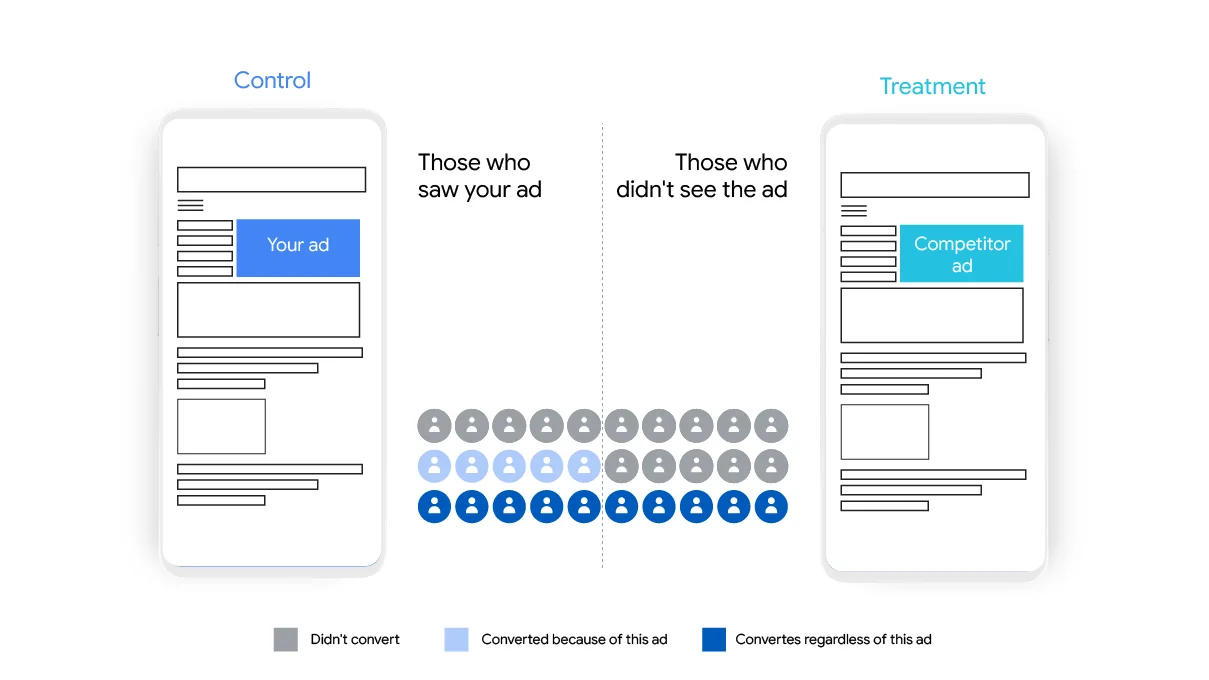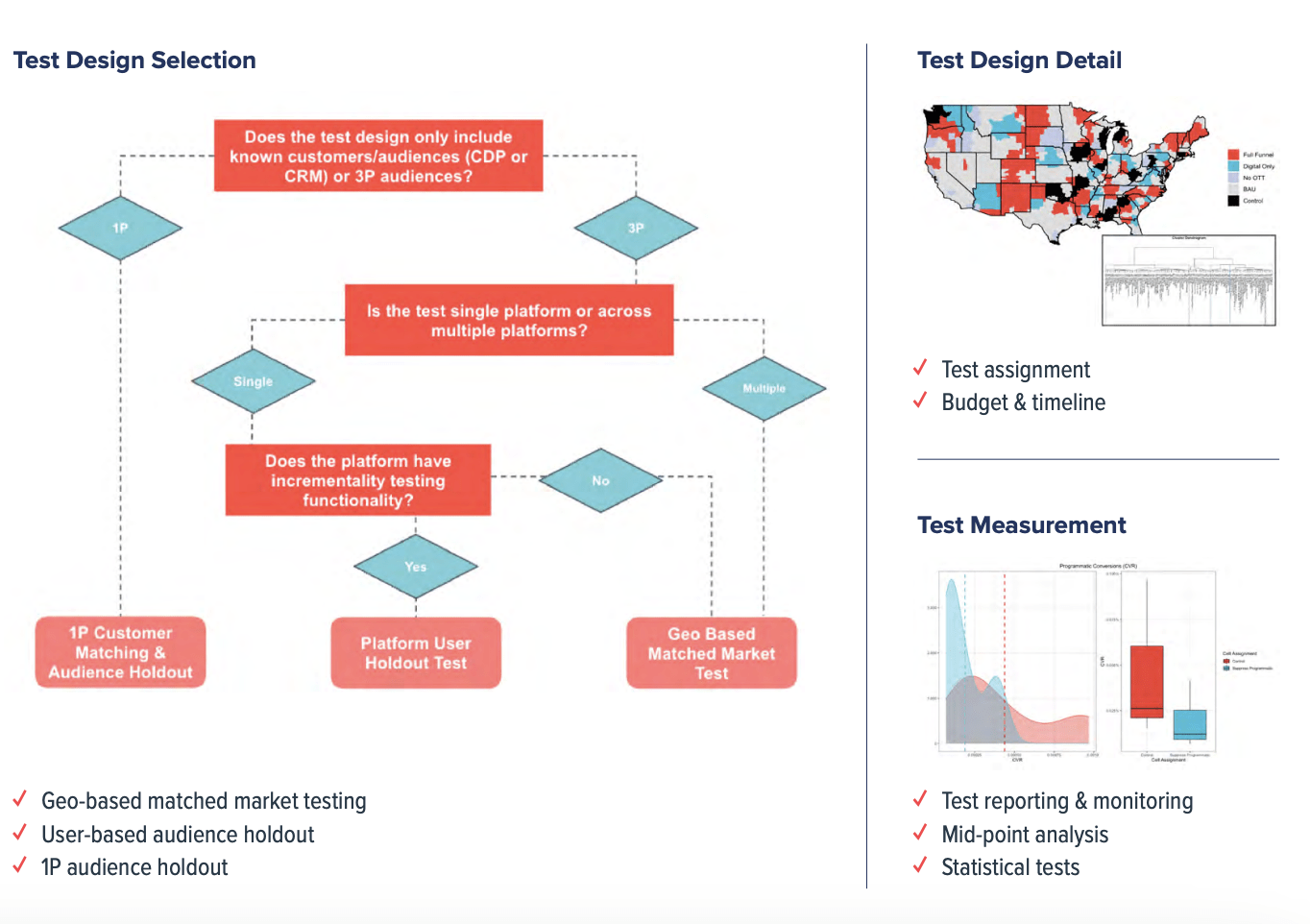Couple the overwhelming rise of new platforms with kissing third-party cookies goodbye and it’s no surprise marketers are having a hard time proving the value of campaigns. Signal loss is a major challenge for brands looking to understand which activations work best.
Without proper measurement, you might be throwing your ad dollars away on under-optimized campaigns. That’s a big problem, especially at a time when marketing budgets are constantly under scrutiny thanks to rising costs.
Media needs to be focused on the incremental impact required to drive bottom-line outcomes. But without reliable platform signals, how can you know you’re making the right moves when it comes to your campaigns?
The answer is match market testing. With a robust testing process in place, you can work on a smaller scale to get a better understanding of the audience you’re targeting, the platforms that work best for your brand, and the optimal budget for each solution, so that you can spend your ad dollars wisely.
What match market testing can do for your brand
If you’re looking to identify the true value a platform or channel is driving for your business, you need to be wary of third-party platforms that say they can do everything to solve signal loss. Don’t get swept up with marketing buzzwords, especially if you don’t have a dedicated team member who can help you understand any data you’re receiving. Instead, consider leveraging match market testing (geographically-based incrementality testing) to find out for yourself.
With match market testing, you can see how different parts of your media mix work by isolating them to a particular geographic area. By testing ads on a particular channel in one region and not another, you can see the impact of those campaigns clearly through the difference in the results coming from those places.
For example, you can test advertising on Meta in Houston, but not in Dallas, so that you can measure the channel’s efficacy based on whether there’s a lift in conversions and other metrics in the region where Meta was used.

Source: Google
Geo-testing lets you evaluate any new platforms or channels you’re launching so you can compare them head-to-head with those you’ve already implemented. It can also indicate which platforms are good at which functions for your brand: you might find that TikTok is most effective for new customer acquisition, while Meta is better for customer retention or driving repeat purchases. You can then use those insights to optimize your media mix to achieve your goals and KPIs more effectively.
And match market testing isn’t limited to platforms and channels; you can also use it to evaluate creative themes and their effectiveness, like running influencer content in one area and not in another to see which region performs better.
-

Source: ciaragolden & Neutrogena
The right testing mindset is crucial for buy-in
Although testing activations on a smaller scale may seem like a no-brainer, for some brands getting executive buy-in for testing might be easier said than done. Those with a “need it now” mentality often want to cancel mid-flight before all the results have come in, but that mindset is detrimental to successful testing. Experimenting takes time–you need to continue your test for the entire time period required to make sure you’re getting the full picture of your results.
Sometimes you may even need to continue work after the initial period for post-analysis testing. For example, if you’re running a four-week test and it takes two weeks for people to convert, you’ll need to keep looking at least two weeks after the test ends to make sure you catch all of the conversions resulting from the test.

Before you begin any kind of test, make sure that everyone involved has a reasonable testing mindset, rather than an expectation that one attempt will give you immediate results. As hard as it can be to implement long-term solutions when you’re under pressure to provide results, patience is an essential part of the process. Results from just one experiment don’t define the “truth” forever: to reap the benefits, you need to make testing a part of your team’s overall process.
The advantages of running your own tests are well worth the effort over time. By choosing to test yourself rather than relying on platform-run options, you’ll have greater confidence in your readouts, because you know and control every aspect of the testing process and understand exactly who the people are in a certain geo-targeted audience.
How (and when) to implement match market testing
Now that you understand what match market testing is and why you should be doing it, you’re ready to get started. Your first step is to build a test brief that defines what is being tested (audiences, platforms, tactics), the timeline, any exogenous variables, and key KPIs. Once that brief is in place, you can define the test size and structure.
Before executing your test, you need to quality assure (QA) the implementation in each market involved both pre- and post-launch. Make sure that the media is served to and excluded from the expected locations. This preemptive review is essential; you don’t want to finish the test only to find that you can’t provide any insights because it was set up wrong in the platform or area.
Once you’ve run your test, it’s time to analyze the results and put them into action. You can leverage any learnings to optimize your media mix against an iROAS or cost-per-incremental customers built directly into reporting.
Ideally, you should take 5-10% of your media spend and use that budget to test all year long in a sprint format so you can have a consistent stream of testing and impact readouts over time. That ensures that you’ll be testing during different moments in the business cycle (e.g. low and high heat moments) to see where incrementality is strongest without being influenced by external factors.
Nothing’s worse than betting everything on the results of one test, only to find out that the parameters you set are no longer relevant or effective because of the time you tested in. If you’re testing consistently throughout the year, you’ll have plenty of data to refer back to so you can make future decisions.
Match market testing isn’t for everyone–it can take significant investment to set up a robust geo-testing process for your brand. But if you have the opportunity to implement a testing process, taking the time to evaluate the platforms you’re using and the audiences you want to target can pay dividends for your brand in the long term.







Responses